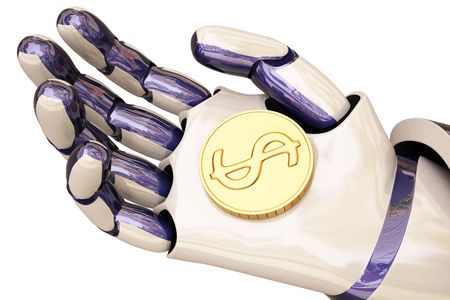As a fellow at the Center on Wisconsin Strategy (COWS) at the University of Wisconsin and a venture partner in the Robo Food and Agriculture Innovation Fund, Madison, Wis-based Kieran Furlong works at the intersection of agriculture and robotics. He focuses his work on creating a sustainable, long-term vision for agriculture.
You have a background in chemicals and engineering, how did you migrate to working in robotics and agriculture?
Let’s just say there is something about chemical engineering that leads many of us down this path of identifying and solving big problems. And I also believe in the power of technology to tackle human problems. After working with large chemical companies and biotech/cleantech start-ups, I saw a path and realised I could build a career in this area. For example, when I worked at Solazyme, an algae biotechnology company, we pieced together the company’s initial manufacturing supply chain and launched its first product, a skincare serum. When I was at Virent, we built a successful partnership with The Coca-Cola Company in the development of a 100% bio-based PET bottle. At the University of Wisconsin Madison, I focused on innovation and technology commercialisation in engineering and physical sciences. Connecting the dots across a variety of different scientific disciplines and bringing those solutions to the world of agriculture is something I really enjoy.
How are robots affecting the agricultural landscape?
Let’s start with the premise that the farmer who can’t make a profit always has the option of selling his land to a developer. Farming is a very real challenge – it’s hard work. Robots are one of the ways that can enable farming to be an attractive lifestyle in the 21st century. They can help us eliminate or ameliorate some of the most unattractive work in farming. For example, robots can clean facilities – think moving manure -- such that these cleaner spaces reduce the likelihood of disease developing in livestock, which in turn reduces the need for the use of antibiotics. In crop farming, herbicides are used to reduce labour, so you don’t have to ‘hoe the row’ every day. But robots can weed and by doing so, reduce the need to use those herbicides. And then think about dairy cows that need milking and how robots can do that milking
Can you talk about cutting-edge technology in agriculture? What might we see?
We are seeing everything from novel genetics – imagine tackling pests with gene tools – to biological crop protections replacing chemicals, to apps that will provide farmers with better information about when to bring products to market.
If we think about using robotics with something that’s really a challenge, take harvesting crops like peaches or strawberries. These are soft, delicate products that need a human hand to harvest. We’re seeing the development of actuators – robotic claws or gripping hands – that can replicate the delicate touch, feel and pressure of the human hand. Doing this in outdoor environments where you deal with weather, dust and other elements – this is not trivial in any way. These are technologies we are investing in and ones that are huge drivers in agriculture.
What’s the bigger picture for these sorts of technologies in agriculture and why are VCs important in this mix?
The bigger picture is to combine these technologies to realise meaningful efficiencies. One company may be working on the robot claw to harvest fruit; another one is working on machine vision to optimise peak ripeness and yet a third company is working on solutions to address uneven terrain in fields. Combine all these process improvements and you have a superior solution.
That’s why VC is so important in agriculture. We look around the corners to see what could be ahead and we have the time to do this sort of analysis when the individual companies may not.
Here’s an example: In the 1930s, passenger steamships moved people from London to New York. If you were focused on designing faster ships, you would be convinced that was the future. In the meanwhile, the aerospace industry is making airplanes. If you were so focused on your faster ship, you would be unlikely to abandon what you were doing even though a better way of moving people faster was in the making.
In my business, you have to be open to abandoning one way of doing things for a better way of doing it.
I understand you earned your winemaking certificate from the University of California – Davis. Is there a relationship to chemical engineering here and what is your favorite class of wine?
I’m a chemical engineer by training and focused on process engineering. I can think of no better way to use those tools than in the process of making wine. It brings together process technology and microbiology among other things. There’s also nothing like looking out the window of a winery in Sonoma and knowing exactly where the grapes have come from. There is increasing interest in knowing where your food is coming from. As for wine, I tend to be partial to the spicier, warm-weather reds. If money were no object, I might be drinking a Châteauneuf-du-Pape but I am very happy drinking a glass of malbec.

.jpg)
.jpg)
.jpg)

.jpg)




